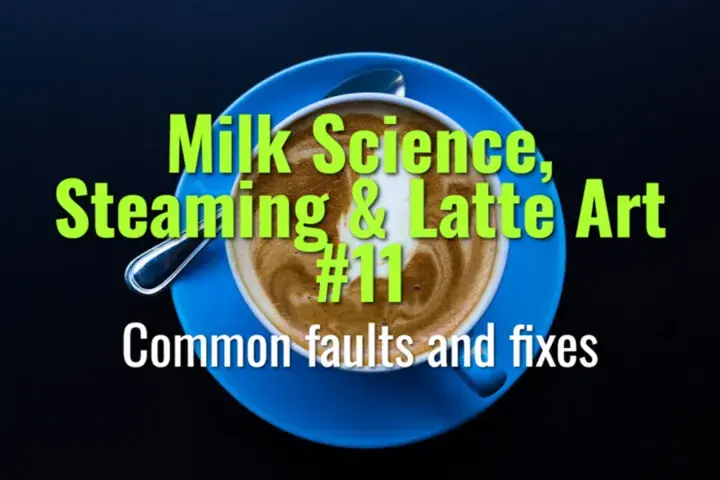Common faults and fixes
The most common milk steaming and latte art faults, their causes, and how to correct them for better texture, flavor, and presentation.
- Coffee Basics Nerds
- 2 min read
Article 11 of 12 in Milk Science, Steaming & Latte Art/

Fault 1: Large Bubbles / Frothy Foam
- Cause: Wand tip too far above surface or too much air introduced during stretching.
- Fix: Keep wand just below surface, introduce air only in first few seconds, then submerge for texturing.
Fault 2: No Foam / Flat Milk
- Cause: Wand tip too deep, not enough air added.
- Fix: Lower pitcher slightly at start to allow air introduction before texturing.
Fault 3: Milk Too Hot / Burnt Flavor
- Cause: Overheating above 70 °C; proteins denature and lactose develops cooked taste.
- Fix: Stop steaming at 55–60 °C; use thermometer or hand feel at pitcher base.
Fault 4: Foam Separates from Milk
- Cause: Poor integration during texturing, insufficient whirlpool motion.
- Fix: Adjust wand angle for vortex, swirl milk in pitcher after steaming to reintegrate.
Fault 5: Dull or Broken Latte Art
- Cause: Microfoam too thick/thin, poor pour control, or uneven crema.
- Fix: Practice milk texture, adjust espresso freshness, and refine pouring technique.
Fault 6: Sour or Weak Milk Drinks
- Cause: Using old or improperly stored milk.
- Fix: Always use fresh milk, stored ≤4 °C, never re-steam leftover milk.
Practical Training Tip
- Steam with water + drop of dish soap to simulate milk foam when practicing wand depth and vortex control.
Summary
Common milk and latte art faults stem from incorrect air introduction, overheating, poor texturing, or bad milk hygiene. By adjusting wand placement, timing, temperature, and milk handling, baristas can consistently produce sweet, glossy microfoam and stable latte art.